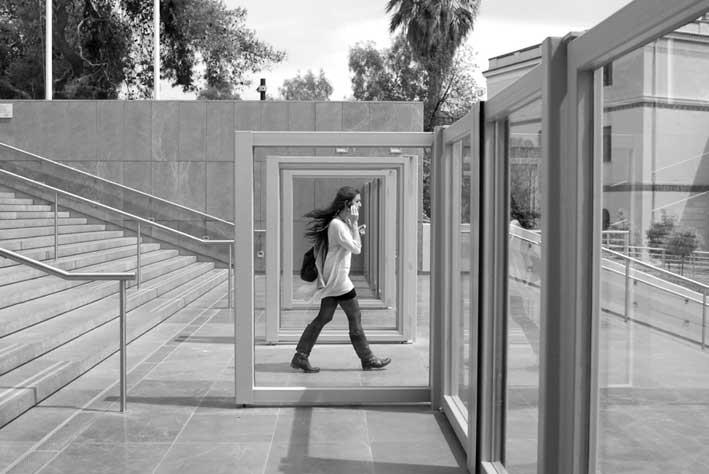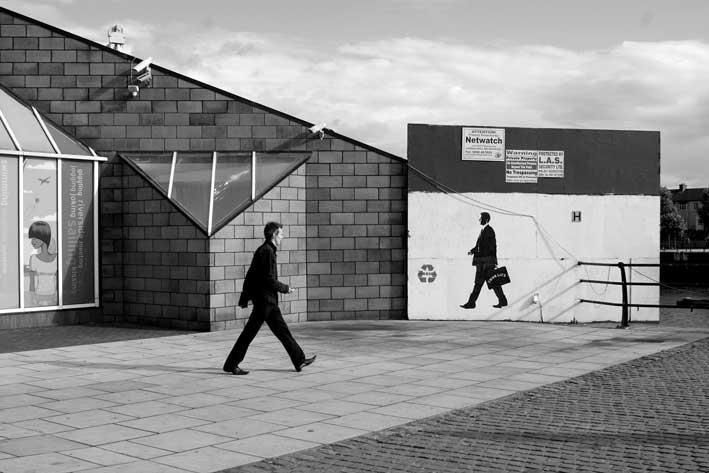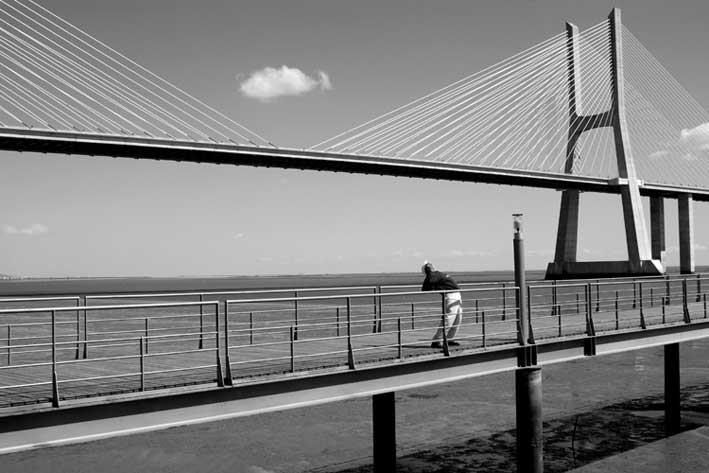French artist photographer Jean-Marc Caracci is currently in Malta photographing the capital city of Valletta, as part of a photo-series project entitled “Homo Urbanus Europeanus.”
Valletta is the 38th European city to be photographed in his eight-year long project, which has already seen 19 exhibitions of the series around the world.
Mr Caracci has been wildly successful in his work, with two of his images of Europe being presented at the latest International Los Angeles Photographic Art Exposition.
In his description, he explains that the photo-series is about the “European urban being.”

In previous comments about the origins of the project, Mr Caracci said that he became inspired back in September 2006 in Chicago. He said that the difference in size between European and American architecture had “impressed” him and that he slowly became more interested in the connection between people and the buildings they surround.
In an interview, Mr Caracci said that while wandering cities for the perfect picture, he mainly looks for lines, aesthetics and shadows. He had said that the time of day when taking the picture is very important, but that the weather does not necessarily have to be sunny or cloudy, having snapped photos under a number of different weather conditions. When taking photos of people, he said that it is important to capture them in the perfect position.
Moreover, he wrote that while photographing the people, it is a “character who walks, stops and weaves through the city, often lonely but no less proud and determined, is not insane, but rather has the stature of a conqueror..this human presence, this silhouette captured with fineness, always in the right place at the right time, gives the city an unexpected beauty and majesty.”

When looking at his portfolio, one can see black and white images of a person, with a large building surrounding them. He had explained in a previous interview that the idea is to highlight the similarities between European peoples rather than differences. He went on to discuss his fondness of Europe’s rich culture and beauty.
In his description Mr Caracci wrote that while the project is mainly an aesthetic project, there is still a “political dimension” to it. He does this by photographing each city in the same style, “sober and without any cultural or social visibility, thus favouring the similarity to the difference, the ‘Europeanity’ to the diversity.” He described the project as a “tool” for bringing together European countries, regardless of whether they are in the EU or not.
Previous European cities included in the photo-series are: Bratislava, Riga, Vilnius, Sofia, Madrid, Warsaw, Rome, Ljubljana, Zagreb, Belgrade, Helsinki, Tallinn, Reykjavik, Paris, Brussels, Oslo, Stockholm, Prague, Berlin, Istanbul, Lisbon, Bucharest, Tirana, Budapest, Vienna, Athens, Luxemburg, Copenhagen, Amsterdam, London, Dublin, Sarajevo, Podgorica, Pristina, Skopje and Chisinau. Istanbul is the only city which is not a capital, but it is nonetheless regarded as the European capital of Turkey.
The exhibition “ Homo Urbanus Europeanus" has been held in 19 countries already : Poland, France, Spain, Bulgaria, Germany, United Kingdom, Australia, Estonia, Czech Republic, Finland, Macedonia, China, South Korea, Slovenia, Slovakia, Ukraine, Croatia, Austria, Hungary.

History
Mr Caracci’s heritage is fully Sicilian, but was actually born in Tunisia in 1958. He lived in the south of France, Montpellier, from very early childhood.
The Sicilian-born comes from a big family, and moved to Montpellier when he was nine months old. One of his brothers took him to a photo lab while they were living in France, and taught him what him enough for the art to become a passion. He had said that he doesn’t have a very good memory, and mused that his attraction to taking photos might be for this reason.
He is a self-taught photographer, getting his big break as being employed as photographer of a regiment, eventually making the army. He said that this is where he properly learnt how to photograph people, turning his interest and focus to “the Man.” In his bio he goes on to say that “the Man” is depicted as “a representation of belonging, rarely as a social object.”
Photographers such as Henri Cartier Bresson, Elliot Erwitt, Raymond Depardon are cited as inspiration for his style. He also mentions American painter Edward Hopper.
He writes that till today, his best-known and biggest project is the Homo Urbanus Europeanus photo-series.